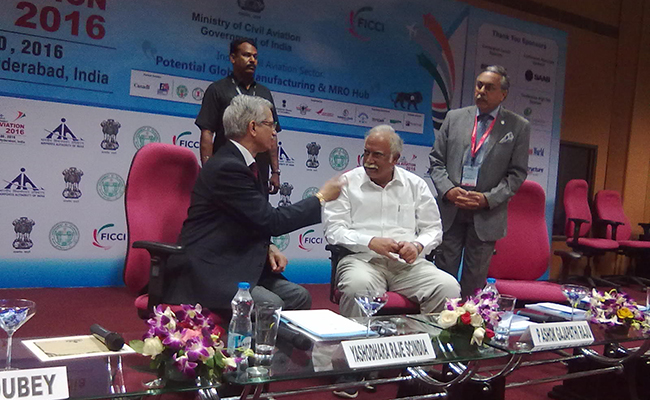Revival of 350 unused airports will give a five-fold rise to Indian Aviation industry over the next few years, said RN Choubey, Secretary, Ministry of Civil Aviation (MoCA)
Sai Nikesh D | The Dollar Business

Ashok Gajapathi Raju, Minister for Civil Aviation(MoCA) and R N Choubey, Secretary, MoCA, during the 5th International Exhibition & Conference on Civil Aviation- ‘India Aviation 2016’, in Hyderabad on Thursday
March 17, 2016 | 09:23pm IST.

 Ashok Gajapathi Raju, Minister for Civil Aviation(MoCA) and R N Choubey, Secretary, MoCA, during the 5th International Exhibition & Conference on Civil Aviation- ‘India Aviation 2016’, in Hyderabad on Thursday
Ashok Gajapathi Raju, Minister for Civil Aviation(MoCA) and R N Choubey, Secretary, MoCA, during the 5th International Exhibition & Conference on Civil Aviation- ‘India Aviation 2016’, in Hyderabad on Thursday





 to success.
to success.